Complete Solutions to NCERT BASED QUESTIONS of chapter KINETIC THEORY OF GASES of Class 11 book with complete answers and questions
| Class 11 | PHYSICS |
| Chapter | KINETIC THEORY OF GASES |
| NARAYANA | NCERT BASED QUESTIONS |
| Number Of Questions | 28 |
| Academic Year | 2023-24 |
The kinetic energy of a molecule of hydrogen at `0^(@) C` is `5.64 xx 10^(-21) J`. Calculate Avogadro's number. Take ` R = 8.31 J "mole"^(-1) K^(-1)`
View SolutionAt what temperature is the root mean square speed of oxygen molecules equal to the r.m.s. speed of carbon dioxide molecules at `-23^(@)C`? Molecular weight of oxgen=32 and that of carbon dioxide=44.
View SolutionThe r.m.s speed of oxygen molecule `(O_(2))` at a certain temperature T is V. If on increasing the temperature of the oxygen gas to 2T, the oxygen molecules dissociate into atomic oxygen, find the speed of the oxygen atom.
View SolutionIf three gas molecules have velocity `0.5`, `1` and `2 km//s` respectively, find the ratio of their root mean square speed and average speed.
View SolutionCalculate the temperature at which root mean square velocity of `SO_(2)` molecules is the same as that of `O_(2)` molecules at `127^(@)C`. Molecular weights of `O_(2) and SO_(2)` are 32 and 64 respectively.
View SolutionFrom a certain apparatus, the diffusion rate of hydrogen has an average value of `28.7 cm^(3) s^(-1)`. The diffusion of another gas under the same condition is measured to have an average rate of `7.2 cm^(3) s^(-1)`. Identify the gas.
View SolutionEach molecule of nitrogen gas heated in a vessel to a temperature of 5000K has an average energy `E_(1)`. Some molecule of the gas escape into atmosphere at 300K. Due to collision with air molecules, average kinetic energy of the nitrogen molecule changes to `E_(2)`. Find the radio `E_(1)//E_(2)`.
View SolutionFind the mean free path and collision frequency of a hydrogen molecule in a cylinder containing hydrogen at 3atm and temperature `27^(@)C`. Take the radius of a hydrogten molecule to be `1overset(0)A`. Given, one atmospheric pressure `=1.013xx10^(5)N m^(-2)` and molecular mass of hydrogen=2.
View SolutionThe diameter of a gas molecule is `2.4 xx 10^(-10) m`. Calculate the mean free path at NTP. Given Boltzmann constant `k = 1.38 xx 10^(-23)` `J molecule^(-1) K^(-1)`.
View SolutionA closed vessel contains a mixture of two diatomic gases `A` and `B`. Molar mass of `A` is 16 times that of `B` and mass of gas `A` contained in the vessel is 2 times that of `B`. Which of the following statements are correct ?
View SolutionPick the correct statement (s) :
View SolutionABCDEFGH is a hollw cube made of an insulator(figure)

face ABCD has positive charges on it. Inside the cube, we have ionsed hydrogen.
The usual kinetic theory expression for pressure
View SolutionDiatomic molecules like hydrogen haven energy due to both translational as well as rotational motion. From the equation in kinetic theory `PV=(2)/(3)E,E` is
View SolutionIn a diatomic molecule, the rotational energy at given temperature
View SolutionWhich of the following diagrams, Fig. depicts ideal gas behaviour ?
View SolutionWhen an ideal gas is compressed adiabaticall, is temperature rises the molecule on the average have nore kinetic energy than before. The kinetic energy increases,
View SolutionAn ideal gas undergoes four different processes from the same initial state (figure). Four process are adiabatic, isothermal, isobaric and isochloric. Out of 1, 2, 3, and 4 which one is idabatic.
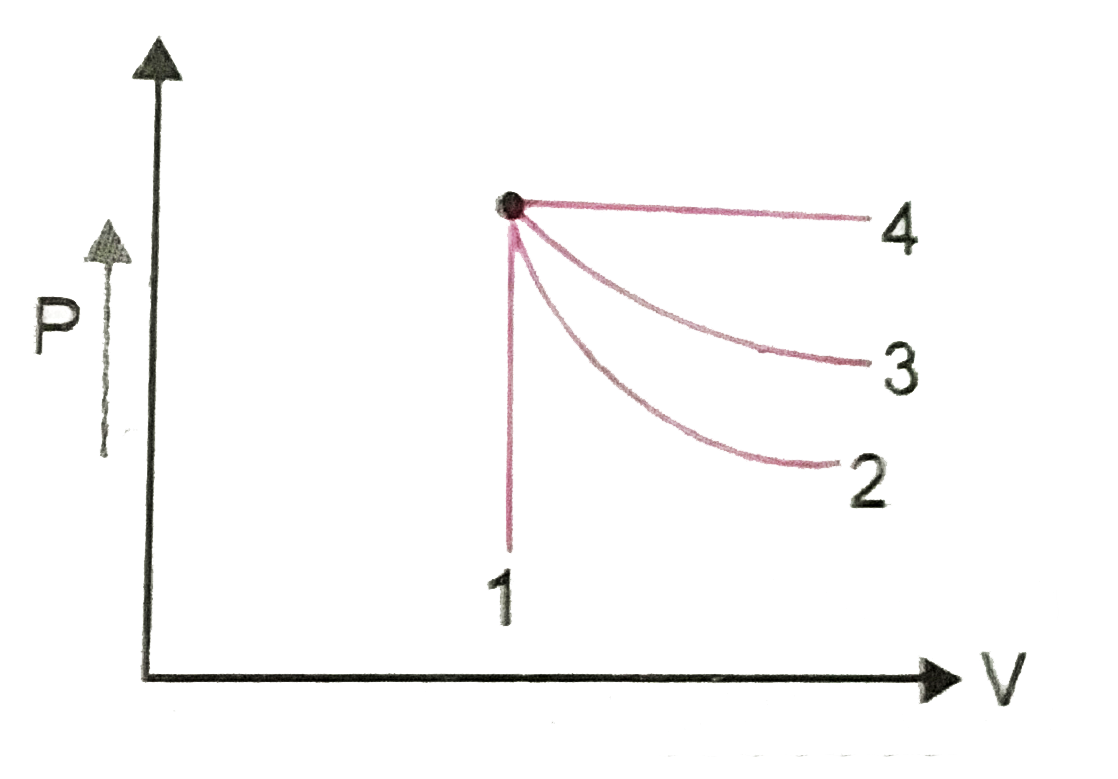
View SolutionIf an avarage person jogs, he produces `14.5xx10^(4) cal//min`. This is removed by the evaporation of sweat. The amount of sweat evaporated per minute (assuming `1 kg` requites `580xx10^(3)` cal for evaporation) is
View SolutionConsider `P-V` diagram for an ideal gas shown in figure.
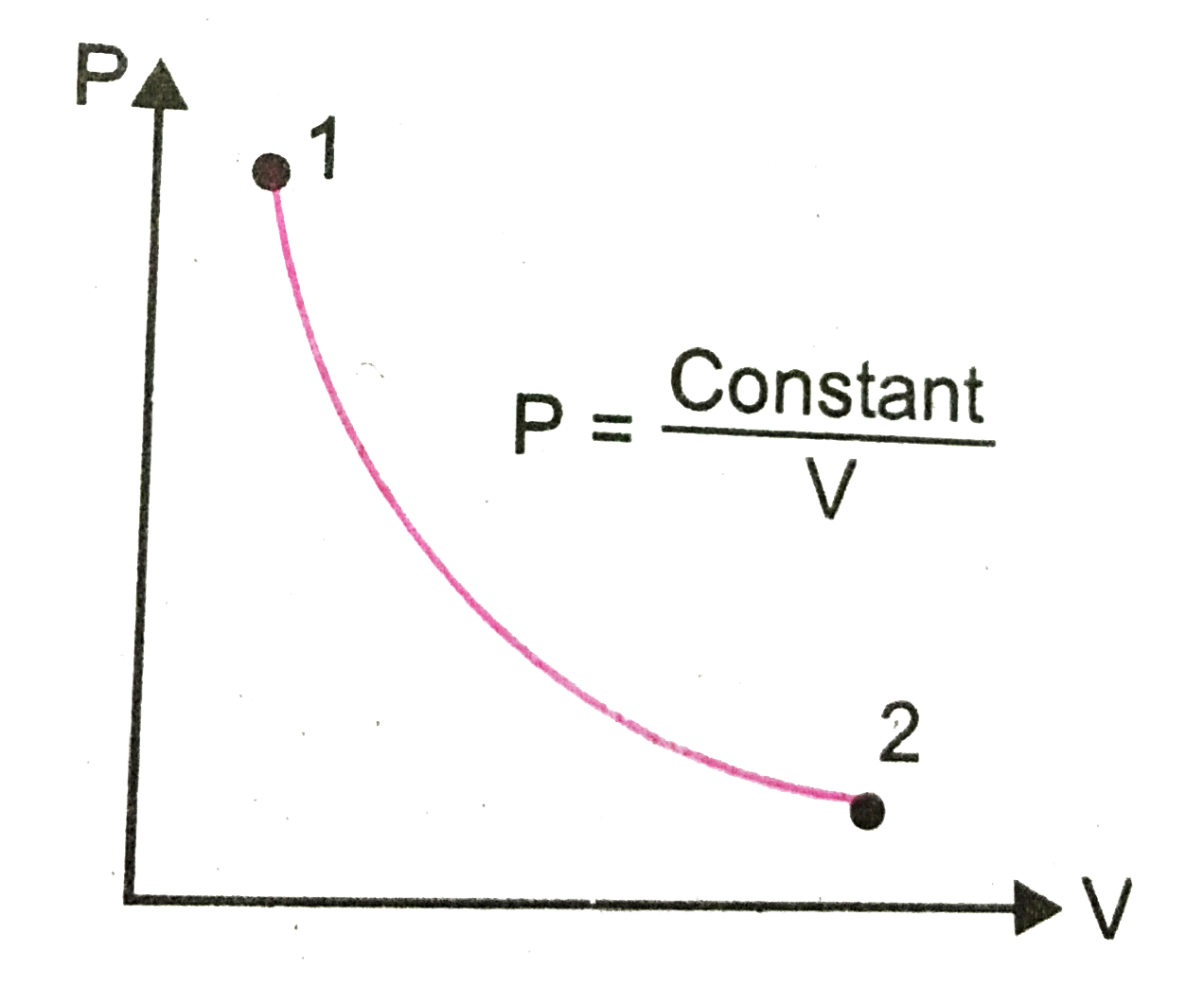
Out of following diagrams(figure). Which represents the `T-P` diagram?
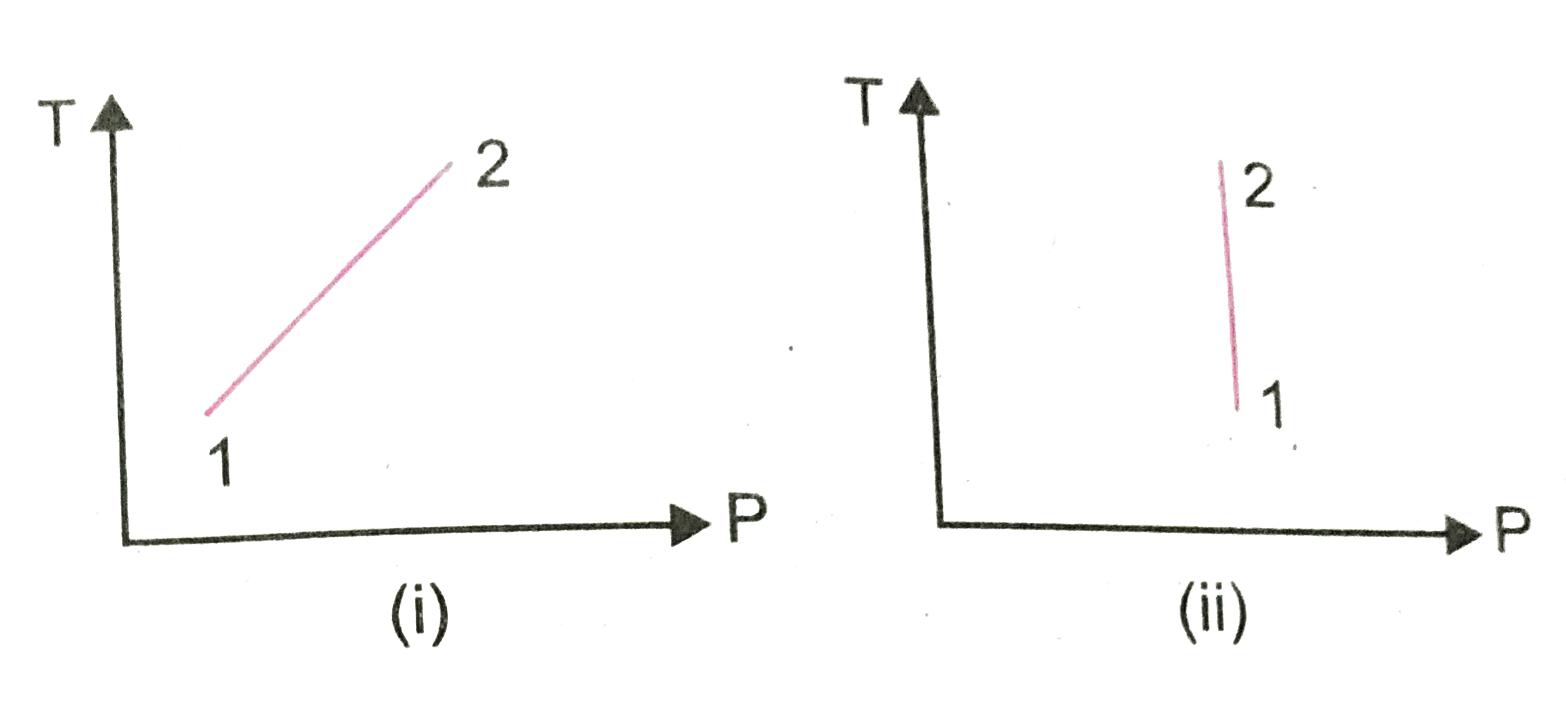

View SolutionAn ideal gas underoges cyclic process of ABCDA as shown in Given `P-V` diagram (figure)
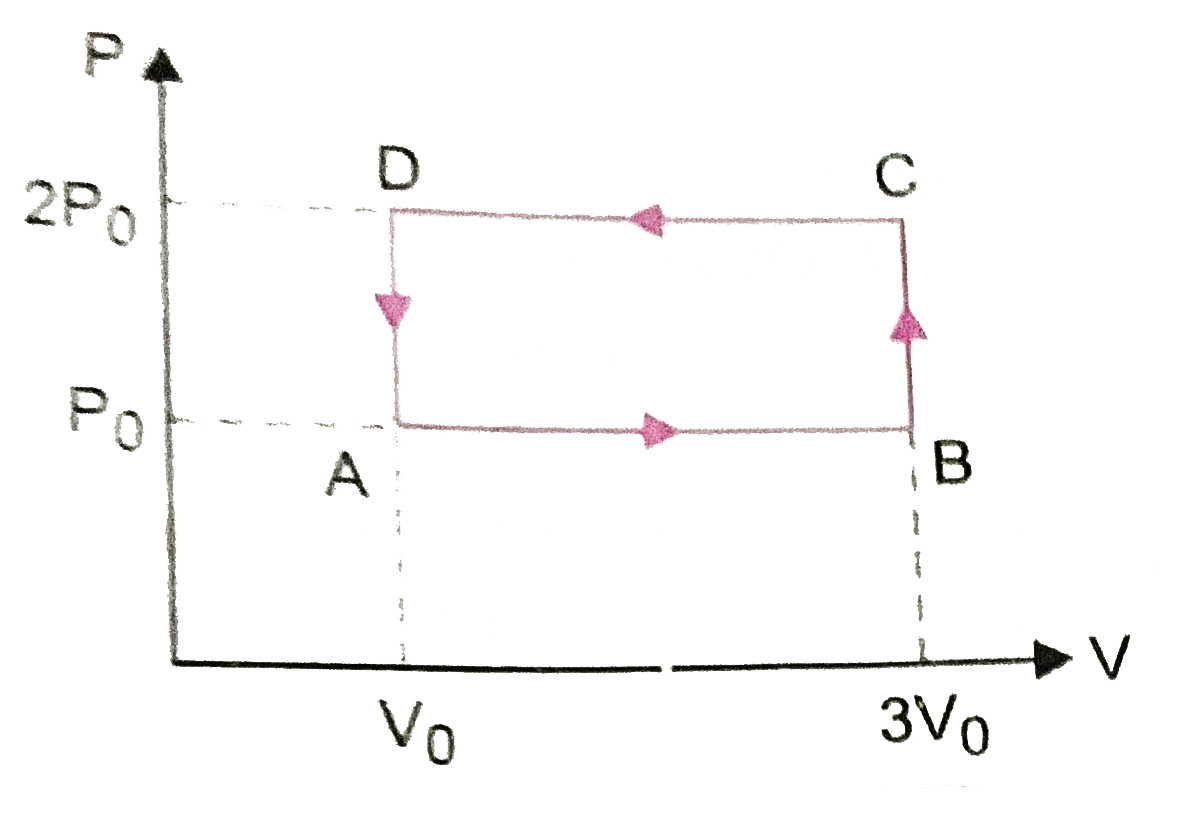
The amount of work done by the gas is
View SolutionConsider two containers A and B containing identical gases at the same pressure, volume and temperature. The gas in container A is compressed to half of its original volume isothermally while the gas in container B is compressed to half of its original value adiabatically. The ratio of final pressure of gas in B to that of gas in A is
View SolutionRefer to the plot of temperature versus time (figure) showing the changes in the state if ice on heating (not to scale). Which of the following is correct ?
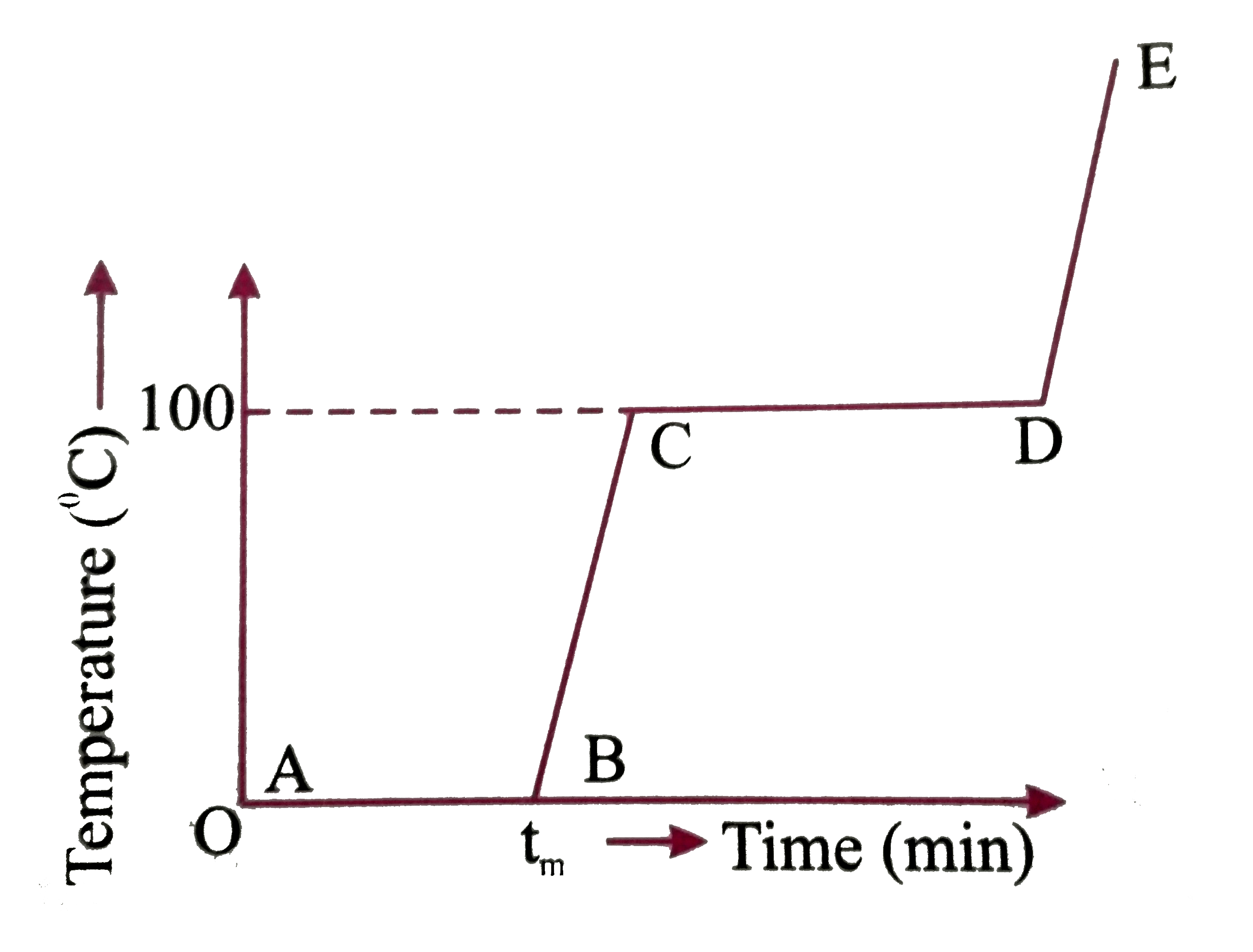 .
.
View SolutionA glass full of hot milk is poured in the table. It begins to cool gradually.
Which of the following is incorrect?
View SolutionWhich of the process described below are irrevesible?
View SolutionAn ideal gas undergoes isothermal process from some initial state `i` to final state `f`. Choose the correct alternatives.
View Solution(figure). Shows the `P-V` diagram of an ideal gas undergoing a change of state from A to B. Four different process I, II, III, IV, as shown in (figure) may lead to the same change of state.
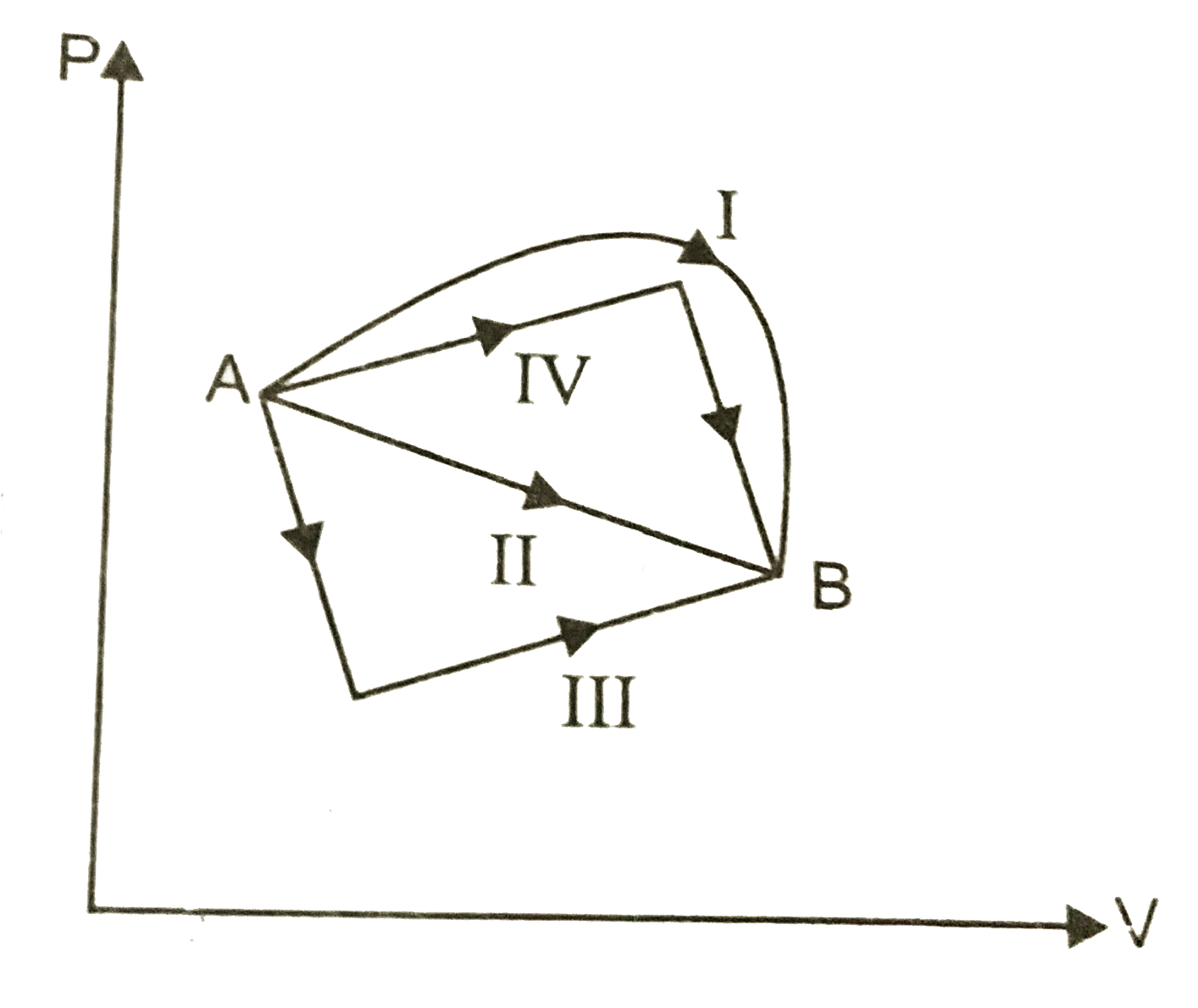
View SolutionConsider a cycle followed by an engine, (figure)
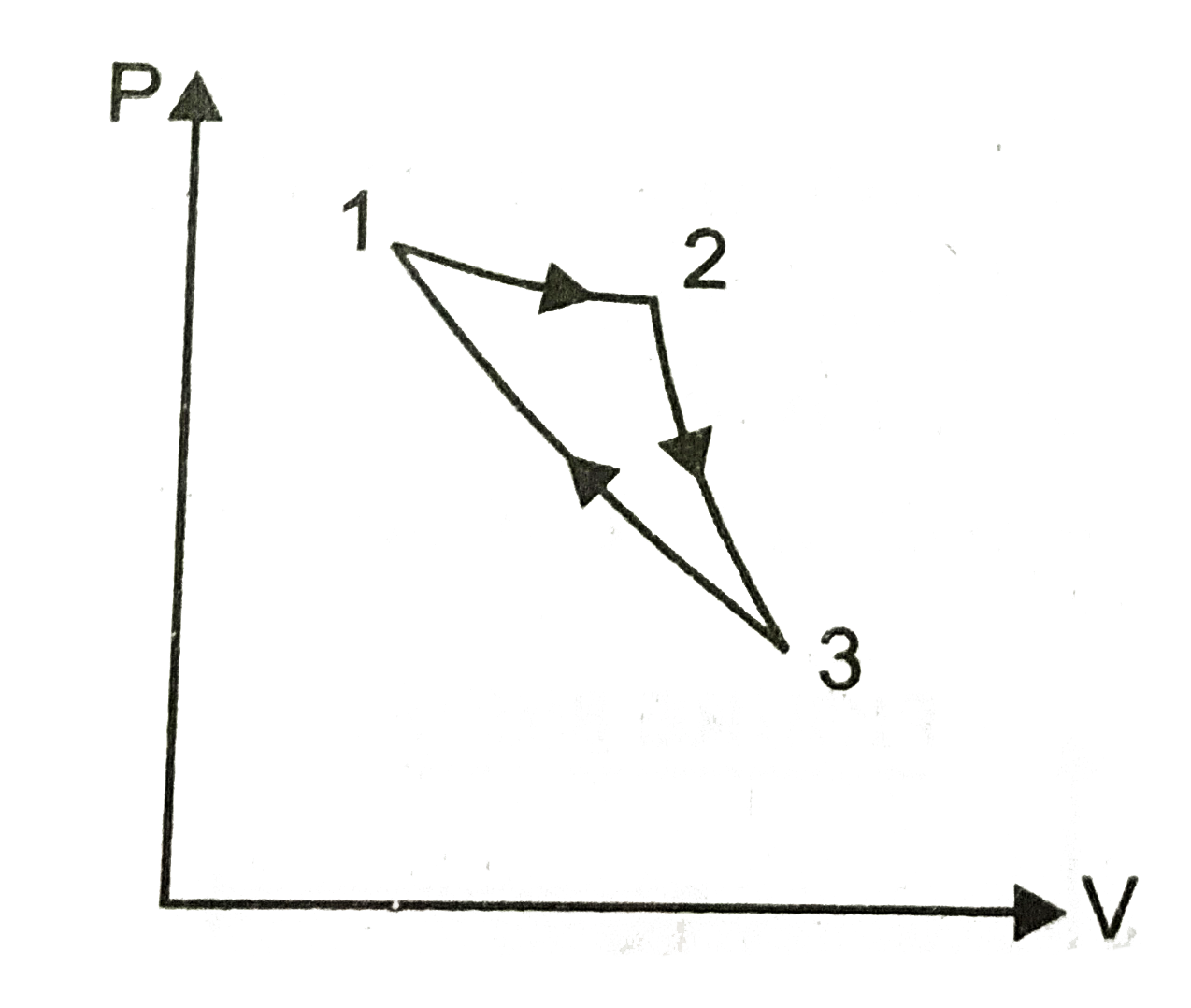
1 to 2 is isothermal 2 to 3 is adiabatic 3 to 1 is adiabatic
such a process does not exist because
View SolutionConsider a heat engine as shown in (figure). `Q_(1) and Q_(2)` are heat added to heat bath `T_(1)` and heat taken from `T_(2)` one cycle of engine. `W` is the mechanical work done on the engine.
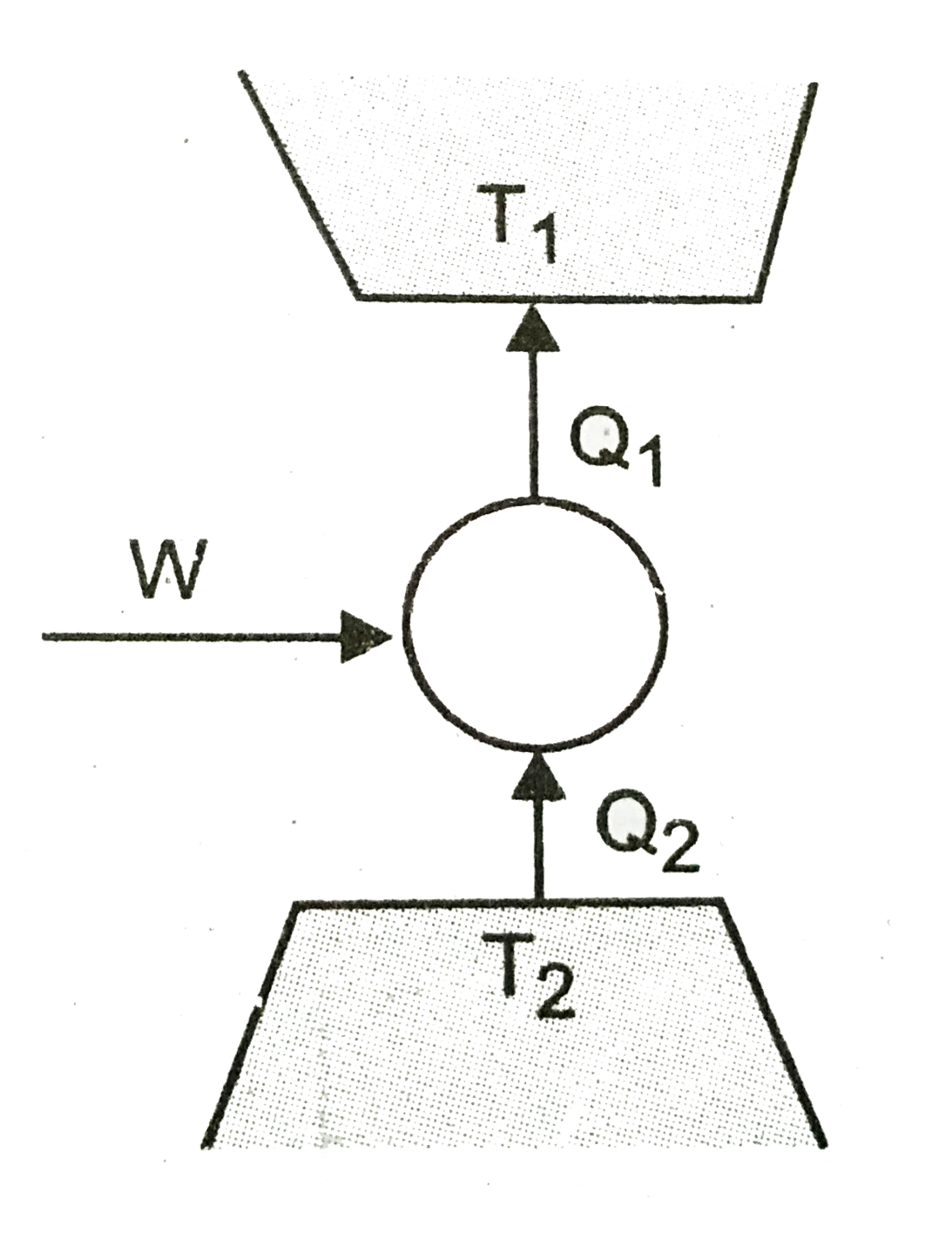
If `Wgt0`, then possibillities are:
View Solution
NCERT BASED QUESTIONS questions and complete solutions for chapter KINETIC THEORY OF GASES of NARAYANA PHYSICS (HINGLISH) of Class 11